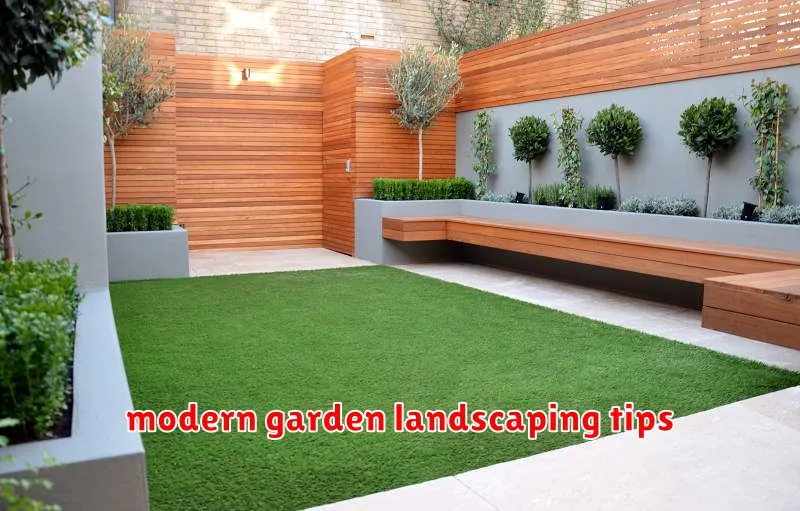Transform your outdoor space into a stunning modern garden with our expert landscaping tips. Learn how to achieve a sleek and sophisticated aesthetic through careful selection of plants, materials, and design elements. This guide offers practical advice for creating a contemporary landscape that is both beautiful and functional, enhancing your home’s curb appeal and providing a tranquil retreat. Discover the secrets to achieving a minimalist yet impactful garden design, incorporating hardscaping and softscaping techniques to create a truly unique and modern outdoor oasis.
LED Pathway Lights
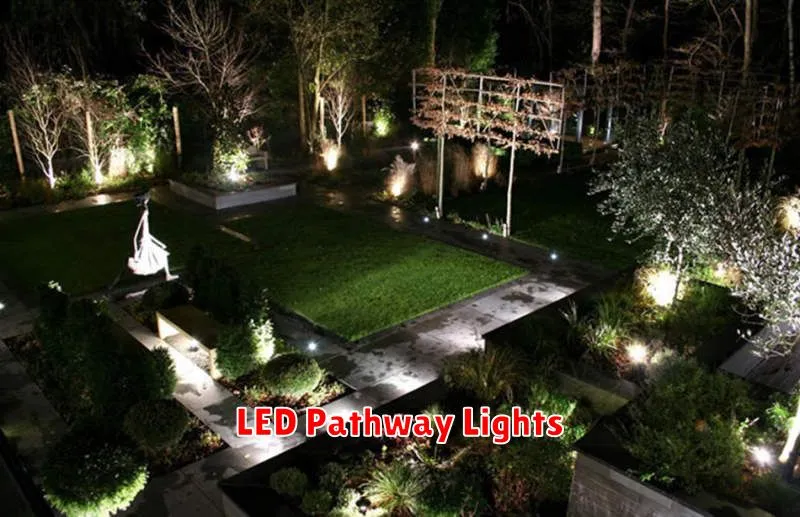
LED pathway lights are a crucial element in achieving a modern garden landscape. Their energy efficiency is a significant advantage, reducing long-term costs and minimizing environmental impact. Beyond functionality, they offer a sleek and contemporary aesthetic, enhancing the overall design.
Consider the style and placement of your LED pathway lights carefully. Options range from minimalist designs to more ornate styles, allowing you to tailor the lighting to your specific aesthetic. Strategic placement emphasizes key features, creates visual interest, and ensures safe navigation at night. The light color temperature (warm white, cool white, etc.) should also be chosen to complement the overall ambiance.
When selecting LED pathway lights, prioritize durability and water resistance. Opt for lights with high-quality materials and appropriate IP ratings to ensure longevity and performance in various weather conditions. Proper installation is essential to maximize their lifespan and aesthetic impact. Investing in high-quality LED pathway lights is a worthwhile investment in enhancing the modern appeal of your garden landscape.
Minimalist Water Fountains
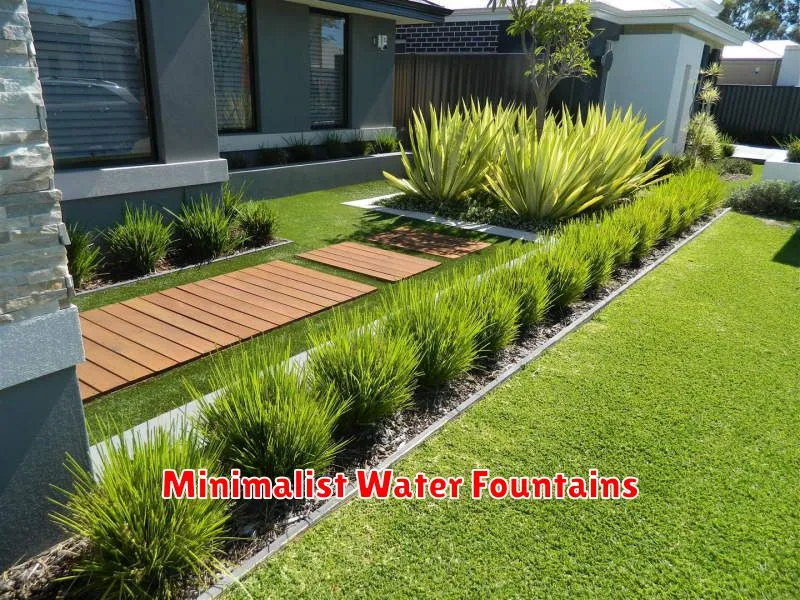
Minimalist water fountains are a key element in achieving a modern garden design. Their clean lines and simple forms contribute to a sense of calm and sophistication, complementing the overall aesthetic of a contemporary landscape. Options range from sleek, stone sculptures to simple, wall-mounted designs, allowing for seamless integration into various garden styles.
When selecting a minimalist fountain, consider the size and scale relative to your garden space. A small, understated fountain can be just as impactful as a larger, more elaborate one, particularly in smaller gardens. The material is also crucial; natural materials like stone or concrete generally offer a more organic feel, whereas metal or glass provide a more contemporary edge. Water flow should be gentle and subtle, enhancing the tranquil atmosphere.
To further enhance the minimalist effect, consider the surrounding landscaping. Keep the planting simple and uncluttered, using clean lines and a limited color palette to prevent visual distraction from the fountain. Strategic placement, perhaps near a seating area or focal point, will maximize its impact and create a serene, inviting space within the overall modern garden design. Remember to choose a fountain that harmonizes with the overall color scheme and materials used throughout your landscape.
Eco-Friendly Lawn Alternatives
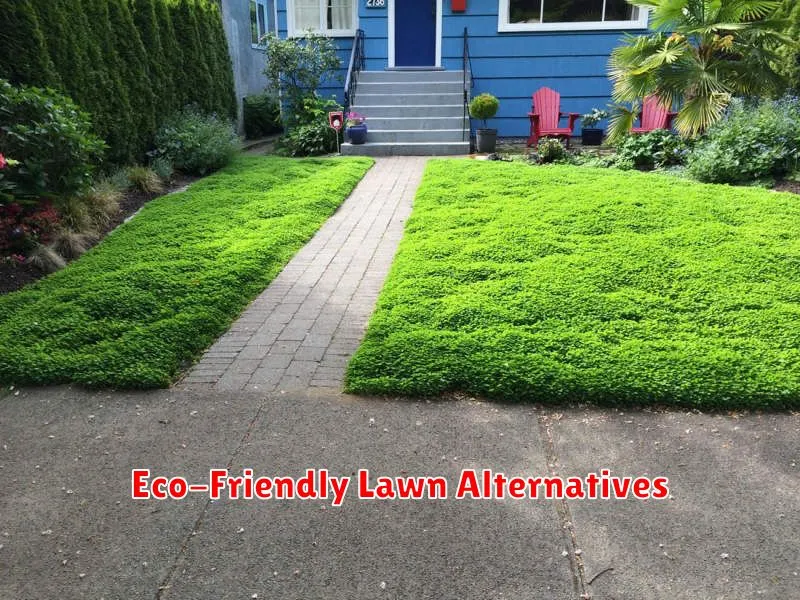
Traditional lawns, while aesthetically pleasing to some, often require significant resources. Maintaining a lush green lawn typically involves extensive water consumption, the use of chemical fertilizers and pesticides, and frequent mowing, all of which contribute negatively to the environment. Fortunately, numerous eco-friendly alternatives offer a modern and sustainable approach to landscaping.
Consider replacing your lawn with native groundcovers. These plants are adapted to your local climate, requiring less water and maintenance. Options include creeping thyme, sedum, or clover, each offering unique textures and colors to enhance your garden’s aesthetic appeal. Another excellent option is to incorporate gravel or stone pathways and areas, minimizing the need for extensive turfgrass while adding a clean, contemporary look.
For a truly low-maintenance and environmentally conscious approach, explore the possibilities of xeriscaping. This method focuses on planting drought-tolerant species that require minimal watering, reducing your water footprint significantly. By strategically selecting plants with varying heights, textures, and bloom times, you can create a visually appealing and sustainable landscape that reflects a modern, eco-conscious design philosophy.
Stone Pathways with Borders
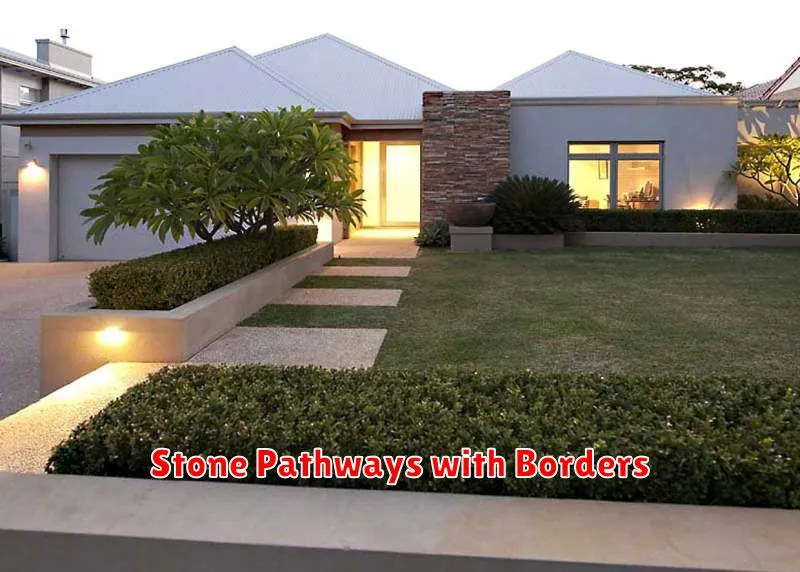
Stone pathways offer a clean, modern aesthetic for garden landscaping. The choice of stone, from sleek flagstones to more rustic options, dictates the overall feel. Consider the surrounding environment when selecting the stone type and color to ensure a cohesive design. Proper installation is crucial; ensuring a level surface and consistent spacing between stones is key to a polished look.
Borders enhance the pathway’s visual appeal and functionality. They provide a defined edge, preventing the pathway from appearing to bleed into the surrounding landscape. Materials for borders can range from contrasting stone types to metal edging or even low-growing, neatly trimmed shrubs. Choose a border that complements the pathway’s stone and overall garden style for a unified aesthetic.
Maintaining a clean and weed-free pathway is essential. Regular sweeping and weeding will preserve the pathway’s sharp lines and prevent the encroachment of unwanted vegetation. Consider applying a sealant to prevent staining and weathering, enhancing the longevity and beauty of your stone pathway. Appropriate upkeep ensures your pathway remains a stunning focal point in your modern garden.
Vertical Herb Planters
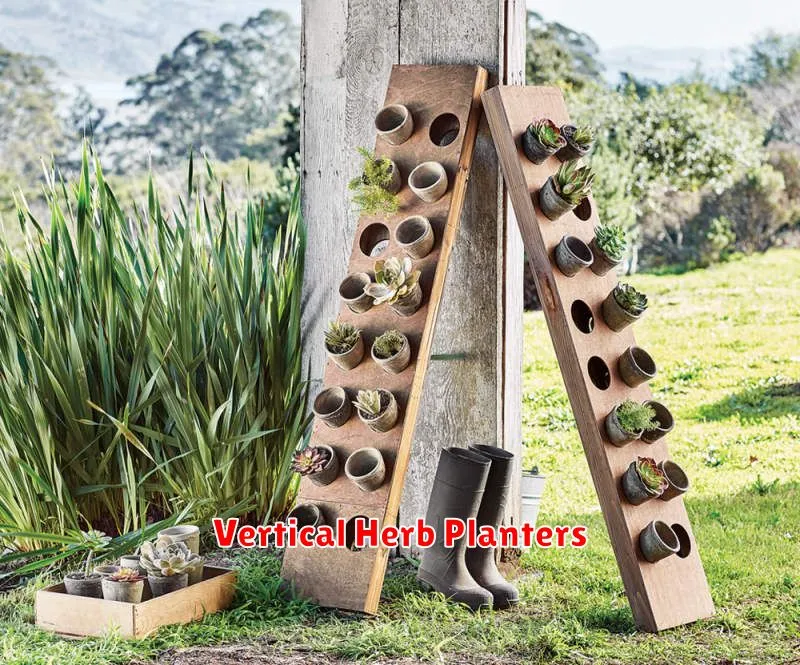
Vertical herb planters offer a stylish and space-saving solution for modern gardens. They maximize limited space by growing herbs upwards, creating a visually appealing and functional element. This design is particularly beneficial for smaller gardens or urban spaces where horizontal garden beds may be impractical.
Various materials can be utilized to create vertical herb planters, including wood, metal, and recycled materials. The choice of material depends on aesthetics and the overall garden design. Consider factors like durability, water retention, and ease of maintenance when selecting a material. Placement is key; ensure adequate sunlight for optimal herb growth and easy access for harvesting.
Integrating vertical herb planters into a modern garden design enhances its aesthetic appeal. The vertical arrangement adds texture and visual interest, complementing clean lines and minimalist design elements. The use of uniform containers and strategic plant selection contributes to a cohesive and sophisticated garden landscape.
Recycled Wood Garden Benches
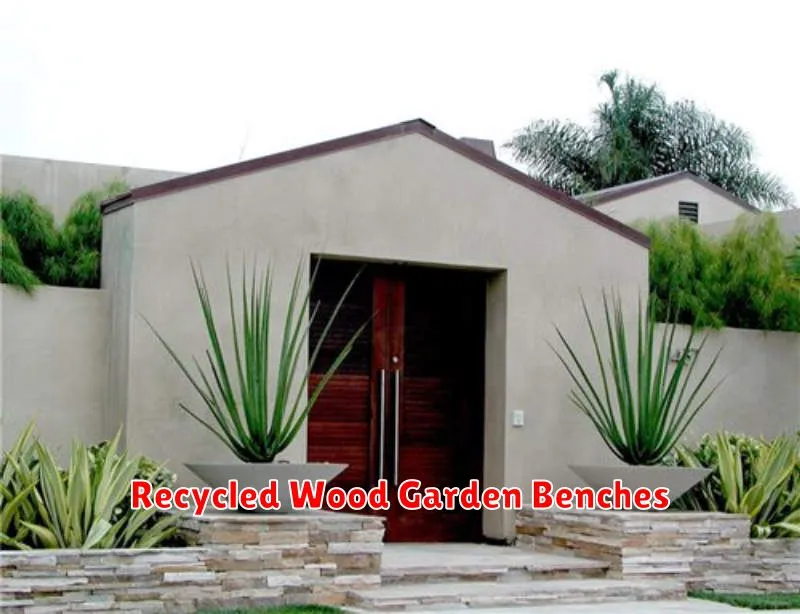
Incorporating recycled wood garden benches offers a sustainable and stylish solution for modern garden landscaping. The use of reclaimed wood provides a unique character and texture, contributing to a visually appealing and environmentally conscious design. Various styles are available, from sleek and minimalist to more rustic and weathered looks, allowing for customization to complement your existing aesthetic.
Recycled wood boasts inherent durability and weather resistance, particularly when treated properly. This makes it an ideal choice for outdoor furniture that can withstand the elements. Furthermore, the inherent variations in color and grain found in reclaimed wood provide a natural, organic feel which contrasts beautifully with more structured elements of a modern garden design.
Choosing benches crafted from recycled wood supports sustainable practices. By repurposing existing materials, you reduce waste and minimize the environmental impact associated with new wood production. This aligns perfectly with the principles of modern landscaping, which frequently prioritize eco-friendly design choices.
Solar Garden Sculptures
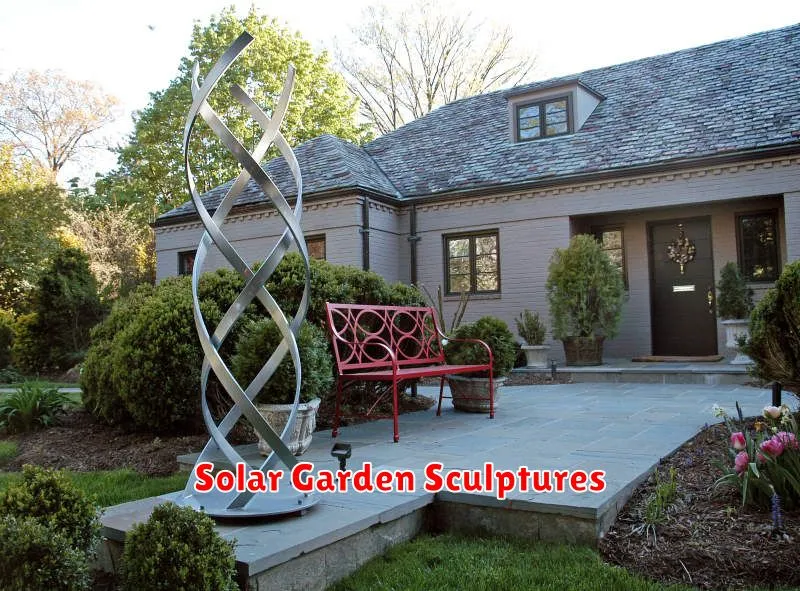
Solar garden sculptures offer a unique way to introduce both art and sustainable energy into your modern landscape design. These sculptures, often crafted from metal or glass, utilize solar power to illuminate themselves at night, creating a captivating focal point and adding ambient lighting. Their sleek designs complement contemporary aesthetics, ranging from abstract forms to more representational pieces.
Consider the size and placement of the sculpture carefully. A larger piece can serve as a statement piece, while smaller sculptures can be grouped for a more dynamic effect. Strategic placement can highlight existing architectural features or draw attention to specific areas of the garden. Ensure the sculpture receives adequate sunlight during the day for optimal nighttime illumination.
Choosing a sculpture that complements your existing color palette and materials is crucial for a cohesive design. Match the sculpture’s finish to the color of your home or other hardscaping elements. The sculpture’s material should also harmonize with the overall style and feel of your garden. Opt for durable materials that can withstand the elements, ensuring long-term aesthetic appeal and functionality.
Native Plant Arrangements
Incorporating native plants into your modern garden design offers numerous advantages. These plants are naturally adapted to your local climate and soil conditions, requiring less water and maintenance than non-native species. This aligns perfectly with the sustainability focus often associated with modern landscaping.
The aesthetic benefits are equally compelling. Native plants often boast unique textures, colors, and forms, allowing for the creation of visually interesting and diverse arrangements. Strategic placement can highlight architectural features of your home or create focal points within the garden. Consider using varying heights and textures of native plants to achieve a layered and dynamic effect.
Choosing the right native plants is crucial. Research your region’s local flora to identify species that thrive in your specific conditions. Consider factors such as sunlight exposure, soil type, and desired size. Consult with local nurseries or gardening experts for guidance on selecting appropriate plants and creating a balanced, thriving arrangement that complements your modern landscape.
Decorative Gravel Beds
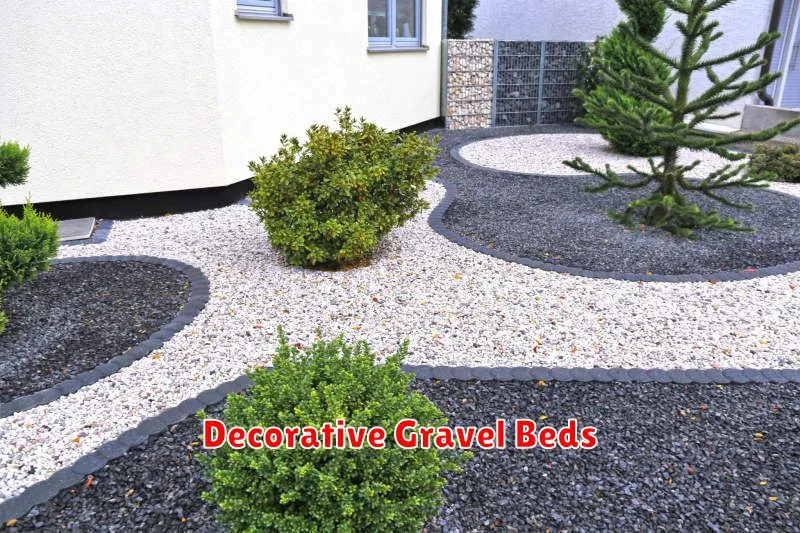
Decorative gravel beds offer a low-maintenance, modern alternative to traditional flowerbeds. Their clean lines and minimalist aesthetic contribute significantly to a contemporary garden design. The choice of gravel color and size is crucial in achieving the desired visual impact, ranging from sleek, dark stones to lighter, more textural options.
Consider the surrounding landscape when selecting gravel. For instance, a minimalist garden might benefit from smooth, uniform gravel, whereas a more naturalistic design could incorporate a mix of sizes and colors for added visual interest. Proper weed barrier installation is essential for long-term success, preventing unwanted plant growth and maintaining the bed’s neat appearance.
Beyond their visual appeal, gravel beds can serve practical purposes. They improve drainage, prevent soil erosion, and require minimal upkeep compared to planted beds. Integrating strategically placed hardscaping elements, such as stepping stones or boulders, can enhance the functionality and aesthetic appeal of the gravel bed, creating a visually stunning and practical addition to any modern garden.
Hanging Garden Lights
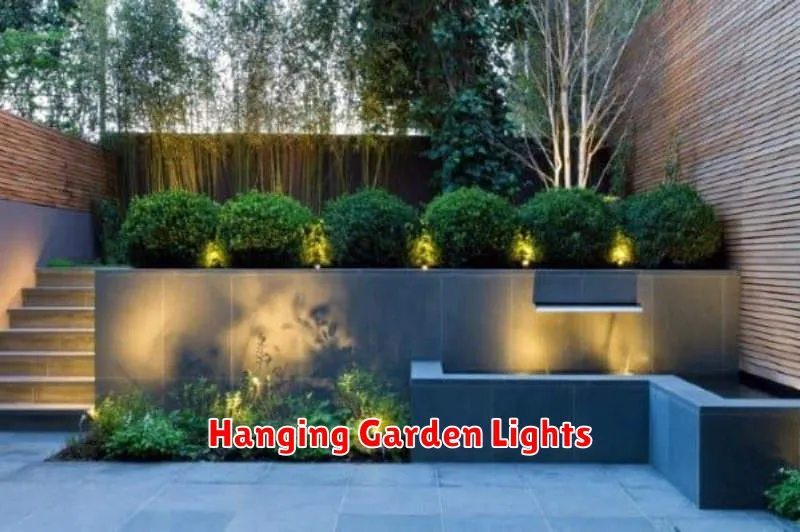
Hanging garden lights offer a stylish and practical way to illuminate your modern landscape. They provide ambient lighting, highlighting key features like pathways, water features, or focal plants, while adding a touch of elegance. Consider the style of your lights – sleek metallic finishes or minimalist designs complement a contemporary aesthetic.
The placement of your hanging lights is crucial. Strategically position them to avoid harsh shadows and create a balanced illumination. Varying heights and using different types of lights (e.g., lanterns, string lights) can add visual interest and depth. Ensure your choices align with the overall scale of your garden to prevent overwhelming the space.
Beyond aesthetics, consider the practical aspects. Opt for weather-resistant fixtures and energy-efficient bulbs to minimize maintenance and environmental impact. Choosing the correct light color temperature (e.g., warm white for a cozy feel, cool white for a brighter ambiance) will enhance the atmosphere you aim to create.

